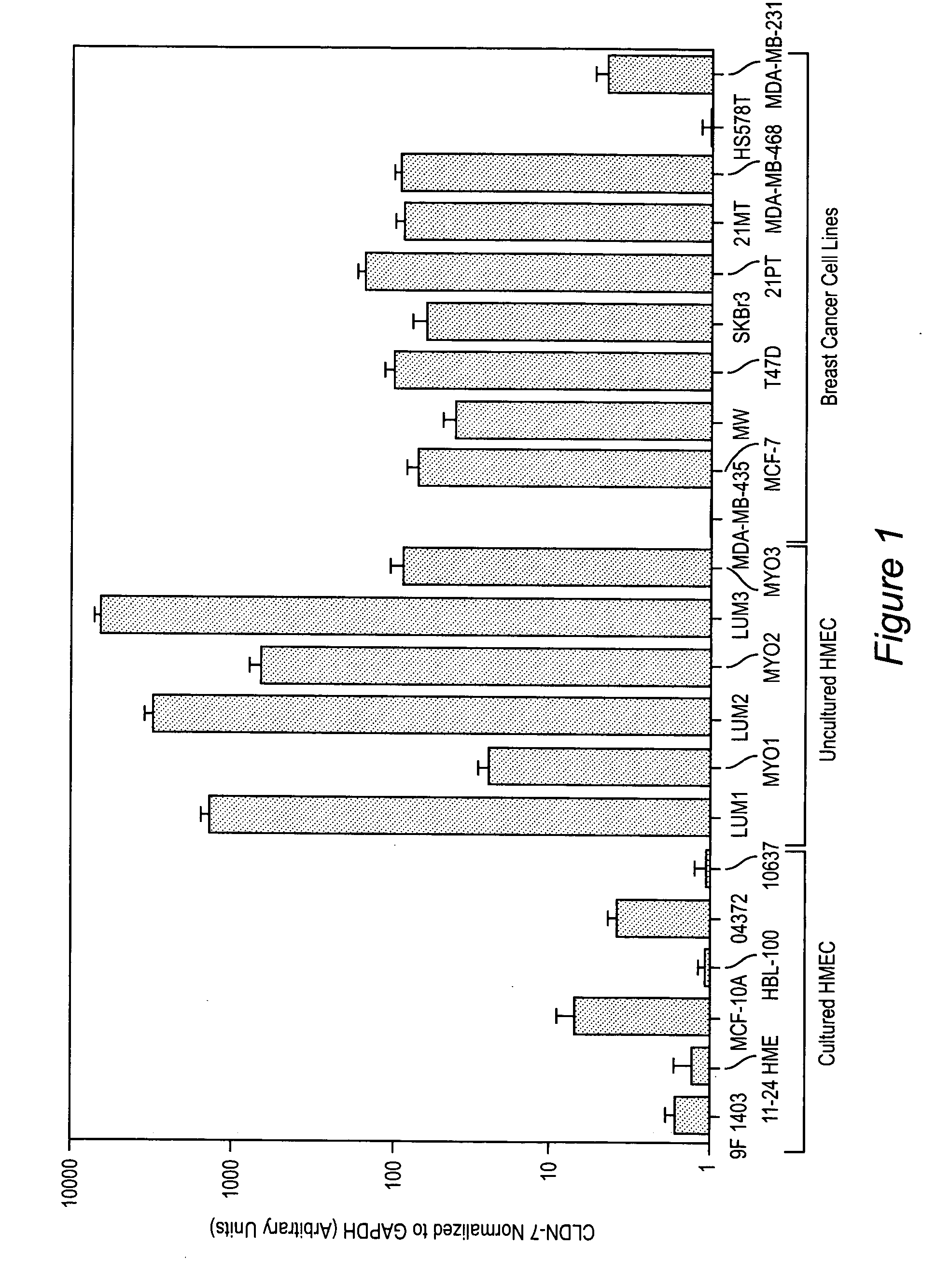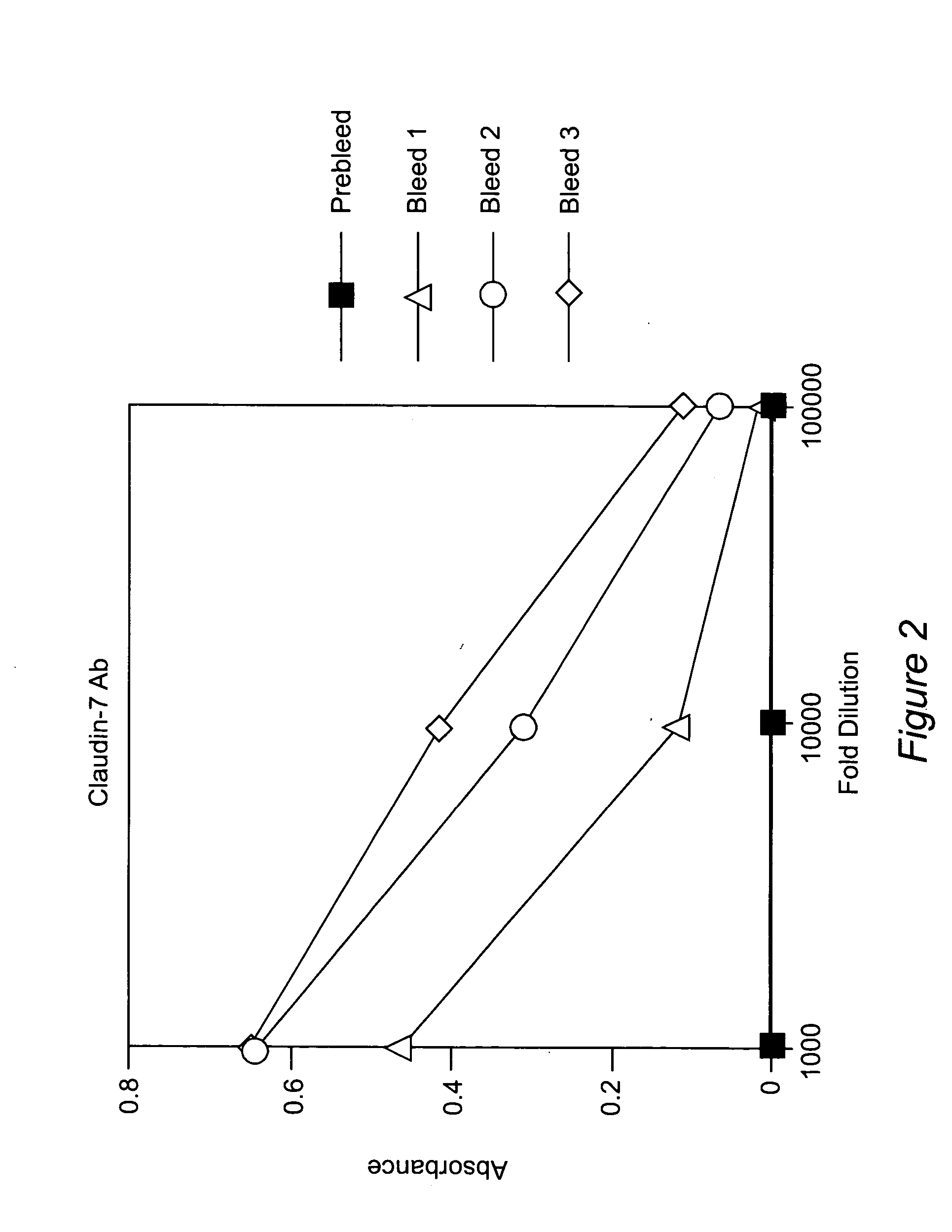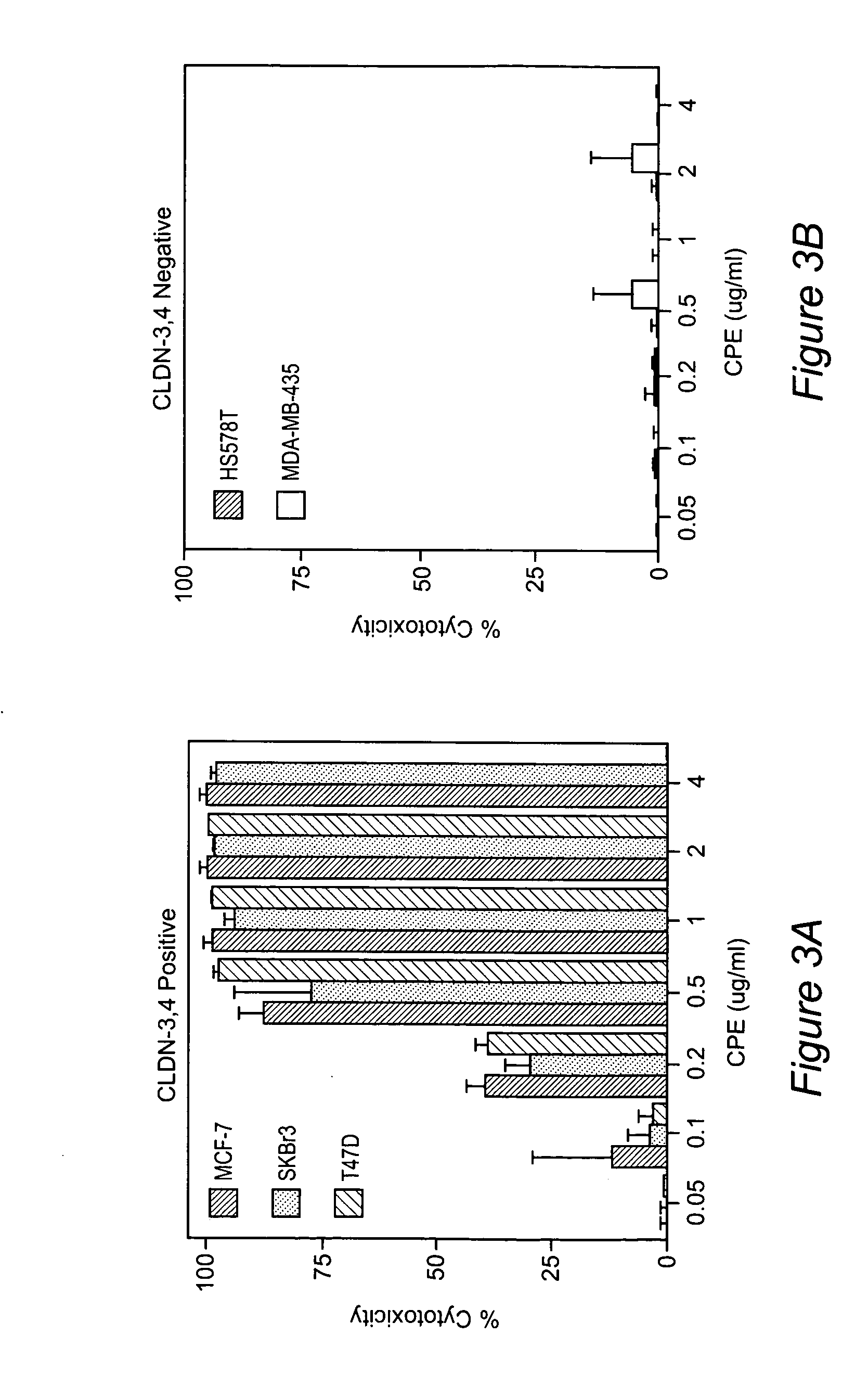Claudins as markers for early detection, diagnosis, prognosis and as targets of therapy for breast and metastatic brain or bone cancer
a breast cancer and marker technology, applied in the field of breast cancer diagnosis, prognosis, and treatment, can solve the problems of limited efficacy of breast cancer treatment in patients, few effective therapies for metastatic brain or bone cancer are currently available, etc., to stimulate cell migration and reduce cell-to-cell adhesion
- Summary
- Abstract
- Description
- Claims
- Application Information
AI Technical Summary
Benefits of technology
Problems solved by technology
Method used
Image
Examples
example 1
Expression of CLDN-7 mRNA in IDC and Normal Mammary Epithelium
[0082] A SAGE and cDNA microarray analysis performed previously in our laboratory had suggested that CLDN-7 was overexpressed in breast cancer cell lines and IDCs of the breast relative to cultured finite lifespan human mammary epithelial cells (HMEC) (Nacht et al., 1999). We initiated validation studies by directly comparing the expression of a number of differentially expressed mRNAs in IDCs using semiquantitative RT-PCR analysis. Total RNA was extracted and cDNA was generated by reverse transcription. CLDN-7 and 36B4, a ‘housekeeping’ ribosomal protein gene, were amplified individually by PCR. PCR products were resolved by electrophoresis on a 1.5% agarose gel. Samples were: 16637- and 04372-cultured HMECs from Clonetics; Lum 1-4 and Myo 1-3-immunobead purified luminal and myoepithelial cells from normal mammoplasty specimens; and 10 invasive ductal carcinomas. Confirming data from microarray analysis (Nacht et al., 1...
example 2
Generation and Characterization of CLDN-7 Polyclonal Antibody
[0085] To study expression of CLDN-7 protein in breast tissues, we generated a rabbit polyclonal antibody against the synthetic polypeptide CKAGYRAPRSYPKSNSSKEYV (SEQ ID NO: 1) corresponding to the C-terminus of CLDN-7. This region of the protein shares little sequence similarity with other members of the CLDN family. Human CLDN-3, -4, and -7 were cloned into pCR 3.1 (Invitrogen) and proteins were generated in vitro using cDNA clones in the TnT Quick Coupled Transcription / Translation System as determined by Western analysis using antibodies specific for CLDN-3 and -4 (Zymed). Next, we used the C-terminal CLDN-7 peptide in enzyme-linked immunosorbent assay (ELISA) to test for the presence of CLDN-7 antibody in rabbit sera. The results are shown in FIG. 2 where CLDN-7 antibody is detected in rabbit sera from bleeds 1-3 as indicated by a linearly increased level of absorbance over several folds dilution versus no absorbance ...
example 3
Expression of CLDN-7 Protein in IDC and Normal Mammary Epithelium
[0088] To determine whether protein expression reflected that of CLDN-7 mRNA expression as obtained by RT-PCR, we performed Western analysis on a panel of 10 breast cancer cell lines, eight IDCs, and four samples of mammary organoids isolated from reduction mammoplasty specimens of normal women. Western analysis was performed on equal amounts of protein from total cell lysates using CLDN-7 and b-actin antibodies. Consistent with real-time quantitative RT-PCR results (FIG. 1), Western analysis of a panel of 10 breast cancer cell lines showed a close correlation between CLDN-7 protein and CLDN-7 mRNA expression. Cell lines that showed low or no detectable mRNA (MDA-MB-435, MDA-MB-231, and HS578T) had no detectable protein, while the remaining seven cell lines showed detectable CLDN-7 expression. Also consistent with RT-PCR, CLDN-7 expression in six of eight IDCs was significantly lower than in four samples of epithelial...
PUM
| Property | Measurement | Unit |
|---|---|---|
| Cytotoxicity | aaaaa | aaaaa |
| Biodegradability | aaaaa | aaaaa |
Abstract
Description
Claims
Application Information
 Login to View More
Login to View More - R&D
- Intellectual Property
- Life Sciences
- Materials
- Tech Scout
- Unparalleled Data Quality
- Higher Quality Content
- 60% Fewer Hallucinations
Browse by: Latest US Patents, China's latest patents, Technical Efficacy Thesaurus, Application Domain, Technology Topic, Popular Technical Reports.
© 2025 PatSnap. All rights reserved.Legal|Privacy policy|Modern Slavery Act Transparency Statement|Sitemap|About US| Contact US: help@patsnap.com



